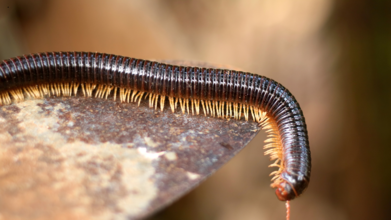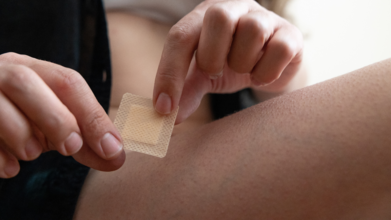- Health Conditions A-Z
- Health & Wellness
- Nutrition
- Fitness
- Health News
- Ayurveda
- Videos
- Medicine A-Z
- Parenting
- Web Stories
This Commonly Used Pill Can Boost Cancer Survival By 61%, Research Finds

Creidt: Canva
There are millions of people who carry anti-cholesterol pills in their pockets. Official records state that eight million people consume statins to lower their risk of heart and circulatory diseases. Now, new research suggests that they do more than just benefiting your heart, they also mitigate the risk of cancer.
Recently, a study was conducted on blood cancer patients who were taking these pills at the start of their treatment. It was found that 61% per cent of them had a lower risk of cancer as compared to those not taking statins.
Here's The Research Explained
The research involved 1,467 patients with chronic lymphocytic leukaemia (a type of blood and bone marrow cancer) or small lymphocytic lymphoma, with an average age of 65. Patients were enrolled in one of four trials looking at the effects of a targeted cancer drug called ibrutinib.
The dose of statin was adjusted according to varied factors like age, gender, among others. Regardless of those factors, patients taking statins were found to have a 61% lower risk of dying from their cancer, a 38% lower risk of dying from any cause, and a 26% lower risk of their disease progressing.
But What Is Statin?
Statins are a class of medications primarily used to lower cholesterol levels in the blood. They work by blocking the enzyme HMG-Coa reductase, which is crucial for the liver's production of cholesterol. By reducing cholesterol production, statins help lower the risk of heart disease and stroke.Cancer Is The Leading Cause Of Death In The World
Cancer is the leading cause of death across the world. According to the World Health Organisation (WHO), it killed 10 Million people in 2020, with breast and lung cancer. and which can then invade adjoining parts of the body and spread to other organs; the latter process is referred to as metastasis. Widespread metastases are the primary cause of death from cancer.
The study was led by Dr Ahmad Abuhelwa, an assistant professor of pharmacy practice and pharmacotherapeutics at the University of Sharjah in the United Arab Emirates. Talking about the research, he said, "These findings don’t allow us to say for certain that statins directly improve cancer outcomes."
What Does Retracted Eardrum Mean? Here's All That You Need To Know About

Credits: Canva
A retracted eardrum, also called tympanic membrane atelectasis, is a condition where the eardrum gets pulled inward toward the middle ear. Normally, the eardrum (or tympanic membrane) acts as a boundary between the outer and middle ear, transmitting sound vibrations to tiny bones that help us hear. But when it collapses inward, that delicate process can be disrupted.
The condition is often silent at first, meaning people may not realize they have it. But in some cases, it can escalate, causing discomfort or even permanent hearing damage.
Spotting the Symptoms
In most cases, a retracted eardrum doesn’t cause any noticeable symptoms. But when the retraction becomes severe enough to affect structures inside the ear, individuals may experience:
- Earache
- Temporary hearing loss
- Fluid discharge from the ear
If left untreated, a chronic retracted eardrum can lead to permanent hearing loss.
Why Does It Happen?
The most common cause of a retracted eardrum is Eustachian tube dysfunction. These narrow tubes connect the middle ear to the back of the nose and help regulate ear pressure.
When they don’t work properly, pressure inside the ear drops, effectively pulling the eardrum inward.
Some common triggers include:
- Recent or recurring ear infections
- Cleft palate
- A poorly healed eardrum after rupture
- Enlarged tonsils or adenoids
Upper respiratory infections, such as the common cold
How Doctors Diagnose It
Diagnosis typically begins with a discussion about symptoms and any recent infections. A doctor will then use an otoscope, a tool with a light, to look into the ear canal. This allows them to visually confirm if the eardrum is abnormally positioned or collapsed.
Treatment Options: When to Wait and When to Act
Not all retracted eardrums require immediate treatment. In mild cases, doctors often recommend a “watch and wait” approach, as pressure may normalize naturally over a few months.
For more advanced cases, several interventions are possible:
Decongestants or nasal steroids: These can improve airflow in the ear and relieve pressure.
The Valsalva maneuver: This self-administered technique involves closing your mouth, pinching your nose, and gently blowing as if trying to pop your ears. It should be performed under medical guidance.
If the condition begins to affect hearing or causes persistent pain, surgical options may be considered.
Surgical Interventions
Two common surgical treatments are:
Tube Insertion (Myringotomy):
Often used in children with recurring ear infections, this procedure involves placing small tubes into the eardrum to help ventilate the middle ear.
Tympanoplasty:
In more severe cases, part of the damaged eardrum may be removed and replaced with cartilage from the outer ear. This stiffens the eardrum, preventing future collapses.
What’s the Prognosis?
The outlook largely depends on the severity. Minor retractions usually resolve without intervention and don’t cause long-term damage. However, more serious cases, especially those that persist or press against ear bones, may result in hearing loss and need medical or surgical correction.
Experts recommend seeking medical attention if you notice ear discomfort, hearing changes, or frequent infections. Early diagnosis can prevent long-term issues and protect one of your most important senses, your hearing.
Could Millipedes Help Treat Pain And Parkinson’s?

Credits: Canva
In a surprising discovery that bridges the gap between creepy crawlies and cutting-edge neuroscience, researchers at Virginia Tech have identified unique compounds in millipede secretions that could pave the way for future treatments for pain and neurological diseases like Parkinson’s, depression, and schizophrenia.
Led by chemist Emily Meyers, the research team uncovered naturally occurring alkaloids in the defensive secretions of the Andrognathus corticarius, a species known colloquially as the Hokie millipede. The millipede, which lives under decomposing leaves and branches on the university’s Blacksburg campus, produces a chemical cocktail that not only deters predators but may influence neuroreceptors in the brain.
“These compounds are quite complex, so they’re going to take some time to synthesize in the lab,” said Meyers, who specializes in studying underexplored ecological sources for potential new drugs.
A Hidden Chemical Arsenal
The compounds, dubbed andrognathanols and andrognathines by Meyers’ team, belong to a class of complex alkaloids. They were discovered after researchers collected several millipedes from wooded areas on campus and analyzed the contents of their defensive glands using a suite of chemical tools.
The results were striking: some of these secretions had a disorienting effect on ants, one of the millipede’s presumed predators. But that’s not all, several of the compounds were found to interact with a neuroreceptor known as Sigma-1. This receptor has been linked to multiple brain disorders, including schizophrenia, depression, Lou Gehrig’s disease (ALS), and Parkinson’s disease.
In addition to warding off predators, the researchers discovered that the compounds may also serve a social function, possibly helping millipedes signal their location to family members in leaf-littered environments.
From Defense to Drug Discovery
This study, recently published in the Journal of the American Chemical Society, is not Meyers’ first foray into studying arthropod chemistry. She has been collaborating with entomologist Paul Marek, and together, they have previously suggested that the family of alkaloids found in millipede secretions could have significant therapeutic potential.
“Millipedes have been around for hundreds of millions of years. They’ve developed these intricate chemical defense systems, and we’re only beginning to understand their value,” said Meyers.
While the compounds show promise, the next hurdle is a familiar one in drug discovery: scalability. The compounds exist in trace amounts in the wild, and researchers need larger quantities for in-depth testing and potential pharmaceutical development.
The Road Ahead
The team is now exploring partnerships with laboratories that can synthesize the compounds in bulk, which would allow for further testing on their biological activity and medicinal properties. Meyers emphasized that while the research is still in its early stages, the potential applications are broad, from pain management to novel treatments for complex neurological conditions.
“Nature has always been a wellspring of inspiration for medicine,” said Meyers. “And sometimes, the most powerful solutions come from the smallest and most unexpected creatures, like a tiny millipede under a log.”
With this groundbreaking discovery, scientists are reminded once again that the natural world may hold secrets that, once unlocked, could transform human health in unimaginable ways.
At-Home Test For Skin Cancer: Researchers Are Developing Easy Patch Tests For Diagnosis

(Credit-Canva)
When we hit peak COVID, with people being urged to stay at home and only to leave during emergencies, the issue of how we may be able to diagnose people with the virus, while making sure they aren’t contaminated in the process of getting the test, gave the rise to at-home tests While people were questioning how accurate it was, these at home tests prove to be of great health in difficult times. While now that COVID has died down, people are still opting for at-home test, so researchers looked into a new way to diagnose cancer. To be exact, skin cancer.
University of Michigan researchers have developed a new skin patch that could one day allow for easy, at-home testing for melanoma, the most dangerous type of skin cancer. The patch, called the ExoPatch, uses a simple test strip with two lines—much like a home COVID-19 test—to give quick results without needing a painful biopsy or blood test. This technology could help people detect melanoma much earlier.
What Is Skin Cancer: Causes & Prevention
Skin cancer is a type of cancer that begins when skin cells grow abnormally. These cells can harm and destroy healthy tissue. Sometimes, they can even spread to other parts of the body.
There are many kinds of skin cancer. The most common types are basal cell carcinoma and squamous cell carcinoma. While these are common, they are also highly curable. The most dangerous form is melanoma, which is more likely to spread and is therefore harder to treat.
Causes and Prevention
Most skin cancers are caused by a lot of sun exposure, so they typically appear on parts of your body that get the most sun. You can lower your risk by protecting your skin with clothing or sunscreen. For cancers that appear on parts of the skin not exposed to the sun, the cause is often different. To stay safe, it's important to regularly check your skin for any changes and tell a doctor about anything you notice.
How the ExoPatch Works
The ExoPatch is a small silicone patch with tiny, star-shaped needles. These needles are so small they only go into the very top layer of the skin and don't draw blood, making the process less painful. The needles are coated with a special gel that attracts and collects exosomes, which are tiny packets released by cells. Cancerous cells release specific exosomes that can indicate the presence of a tumor.
After wearing the patch for just 15 minutes, you can remove it and place it in a liquid that dissolves the gel and releases the exosomes. You then dip a test strip into the liquid. If two lines appear, it means melanoma exosomes were found. If only one line appears, the test is negative.
Science Behind the Test
Exosomes were once thought to be cellular waste, but scientists now know they carry information like DNA and RNA and are used by cells to communicate. Cancer cells use exosomes to prepare other tissues for tumors to spread. By detecting these specific cancer exosomes, the ExoPatch could catch cancer earlier than previous methods. In initial tests on mice, the patch was able to successfully tell the difference between healthy skin and melanoma tissue, collecting 11.5 times more cancerous exosomes from the melanoma samples.
The ExoPatch is still in the early stages of development, but the researchers are optimistic about its potential. After further testing on humans, this technology could be modified to detect other cancers with solid tumors, such as lung, breast, colon, and prostate cancer. The team has applied for a patent for the patch, which they believe could have huge applications for at-home disease detection in the future.
© 2024 Bennett, Coleman & Company Limited

